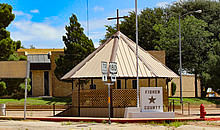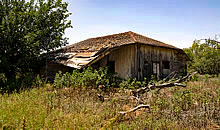Main Menu
Fisher County Data
Fisher County Communities & Places
Genealogy & History Links by USGHN
Important Fisher County Addresses
Sponsors
Fisher County Neighbors
Jones County, Texas
Kent County, Texas
Mitchell County, Texas
Nolan County, Texas Genealogy & History Network
Scurry County, Texas Genealogy & History Network
Stonewall County, Texas Genealogy & History Network
Taylor County, Texas
Other Websites
Welcome to Fisher County Texas Genealogy & History Network!
Welcome to the Fisher County, Texas Genealogy & History Network. Our purpose is to provide visitors with free resources for genealogical and historical research. To share your genealogy or history information, send an email to txghn@outlook.com and we will happily include it here. For other Texas Counties, visit the Texas Genealogy & History Network state website and go to the appropriate county. Thanks for visiting and good luck with your research! |
|
About Fisher County, Texas...

Fisher County comprises a region that has been the site of human habitation for several thousand years. Archeological artifacts recovered in the area suggest that the earliest human inhabitants arrived around 10,000 to 12,000 years ago, and evidence of Paleo, Archaic, and Historic cultures have been found in the county. Following these earliest inhabitants were the Lipan Apaches, who had settled in the region by the sixteenth century; later, around 1700, Comanches and Kiowas drifted in from the north, and Pawnees, Wichita, and Wacos occasionally hunted along the upper Brazos valley. The Old Indian Trial, which crossed the county, was used by various Indians to travel between the Plains region and Central Texas. Spanish explorer Francisco Vázquez de Coronado traversed the general region in 1541, and José Mares crossed it in 1788 while searching for a more direct route from Santa Fe to San Antonio. In the spring of 1847 Robert B. Marcy traveled along the Old Indian Trial through Fisher County on his way to El Paso; he camped for two days near the site of present-day Rotan. In the early summer of 1856 Robert E. Lee explored the county while leading a punitive expedition against the Indians.
 A few buffalo hunters passed through the area in the early 1870s, but not until 1876, when the legislature separated the county from Bexar County, did the first permanent settlers arrive. The new county, named for Samuel Rhoads Fisher, a signer of the Texas Declaration of Independence, however, remained sparsely populated and was not organized until 1886. Most of the early residents were cattle ranchers, who were attracted to the area by its abundant grasslands and available water. The census of 1880 reported 136 inhabitants. Only four of those who responded listed their occupation as farmer; the remainder were connected with the livestock industry. Cattle, in fact, greatly outnumbered people in the county's early years; by 1880, 24,164 cattle were reported. Among the early residents was a colony of Swedes from Travis and Williamson counties, who settled in the northeastern portion of Fisher County near the site of present-day McCaulley. Other early settlers came from East and North Texas. The first post office, Newman, was established in 1881. The first townsites registered were Fisher, now North Roby, on November 11, 1885, and Roby on April 16, 1886. There was a bitter county-seat struggle between Roby and Fisher. Roby eventually won the election, but many questioned its legality, and it was
A few buffalo hunters passed through the area in the early 1870s, but not until 1876, when the legislature separated the county from Bexar County, did the first permanent settlers arrive. The new county, named for Samuel Rhoads Fisher, a signer of the Texas Declaration of Independence, however, remained sparsely populated and was not organized until 1886. Most of the early residents were cattle ranchers, who were attracted to the area by its abundant grasslands and available water. The census of 1880 reported 136 inhabitants. Only four of those who responded listed their occupation as farmer; the remainder were connected with the livestock industry. Cattle, in fact, greatly outnumbered people in the county's early years; by 1880, 24,164 cattle were reported. Among the early residents was a colony of Swedes from Travis and Williamson counties, who settled in the northeastern portion of Fisher County near the site of present-day McCaulley. Other early settlers came from East and North Texas. The first post office, Newman, was established in 1881. The first townsites registered were Fisher, now North Roby, on November 11, 1885, and Roby on April 16, 1886. There was a bitter county-seat struggle between Roby and Fisher. Roby eventually won the election, but many questioned its legality, and it was  later discovered that one of the voters, a Mr. Bill Purp, was actually a dog whose owner lived near Roby.
later discovered that one of the voters, a Mr. Bill Purp, was actually a dog whose owner lived near Roby.
Railway construction began in 1881 when the Texas and Pacific Railway routed an east-west branch through Eskota in the southeastern corner of the county. Cheap land lured many new settlers to the county. Many of the new settlers were farmers, who began plowing and fencing the prairie. In 1880 there were only three farms in the entire county; in 1890s that figure had grown to 332; and by 1910 the county had 1,839 farms. One result of the dramatic rise of the farming economy was the gradual decline of ranching. The earliest farmers in the county planted such subsistence crops as corn and wheat. But in the 1880s cotton was introduced, and by the early 1890s corn, oats, and wheat were being grown commercially. After 1910 wheat and cotton increasingly took center stage, and by 1920 the county was among the state's leaders in wheat production. High prices for cotton, however, persuaded many farmers to dedicate ever-increasing acreage to cotton culture in the 1920s. In 1926 more than 48,000 bales were ginned in the county, and production levels continued to be high through the end of the 1920s.
 Wood's Chapel, built in 1883, was the first church and school building in the county. In the early 1980s Fisher County had four school districts, with four elementary, one middle, and three high schools. The average daily attendance was 968 in 1981–82. The first churches in Fisher County were established shortly after county organization. In the mid-1980s the county had twenty-three churches with a estimated combined membership of 5,379. The largest denominations were Southern Baptist, Catholic, and United Methodist.
Wood's Chapel, built in 1883, was the first church and school building in the county. In the early 1980s Fisher County had four school districts, with four elementary, one middle, and three high schools. The average daily attendance was 968 in 1981–82. The first churches in Fisher County were established shortly after county organization. In the mid-1980s the county had twenty-three churches with a estimated combined membership of 5,379. The largest denominations were Southern Baptist, Catholic, and United Methodist.
The population of Fisher County fell steadily after World War II, as residents moved away to find jobs. In 1990, nearly half of the population (2,284) lived in Rotan. The largest ancestry groups are English, Irish, and Hispanic. Moore, West Moore, and Plasterco lakes and the Brazos River are popular with fishermen, and the county also attracts numerous dove and quail hunters. A stock show and a fair in October are among the prime tourist attractions.
 The county has a total area of 902 square miles, of which 899 square miles is land and 3 square miles (0.3%) is water. The population recorded in the 1880 Federal Census was 136 and peaked at 13,563 in 1930. The 2010 census recorded 3,974 residents in the county.
The county has a total area of 902 square miles, of which 899 square miles is land and 3 square miles (0.3%) is water. The population recorded in the 1880 Federal Census was 136 and peaked at 13,563 in 1930. The 2010 census recorded 3,974 residents in the county.
Neighboring counties are Stonewall County (north), Jones County (east), Nolan County (south), Scurry County (west), Kent County (northwest), and Taylor County (southeast). The county seat is Roby. Other communities in the county include Hamlin, Hobbs, McCaulley, North Roby, Rotan, and Sylvester.
Fisher County, Texas Records
Birth Records - The Texas Department of State Health Services has records from 1903 to present. Records for the last 75 years considered private and will only be provided to certain individuals. To obtain current information on who may obtain a record, how to submit a request and an official request form, see the Texas Department of State Health Services website or write to Texas Vital Records, Department of State Health Services, P.O. Box 12040, Austin, TX 78711-2040.
For older birth records you will have to write to the County Clerk of the applicable county. The existence of birth records prior to 1903 will vary widely from county to county. Local historical societies and genealogy collections in local libraries may be able to provide some information.
Death Records - The Texas Department of State Health Services has records from 1903 to present. Records for the last 25 years considered private and will only be provided to certain individuals. To obtain current information on who may obtain a record, how to submit a request and an official request form, see the Texas Department of State Health Services website or write to Texas Vital Records, Department of State Health Services, P.O. Box 12040, Austin, TX 78711-2040.
Marriage Records - The Texas Department of State Health Services can provide a verification letter of marriage for Texas marriages from 1966 to present. This is NOT a marriage license. To obtain a certified copy of a marriage license you must contact the County or District Clerk in the county or district where the marriage took place.
Local historical societies and genealogy collections in local libraries may be able to provide some information.
Divorce Records - The Texas Department of State Health Services can provide a verification letter of divorce for Texas divorces from 1968 to present. This is NOT a copy of the divorce decree. To obtain a certified copy of a copy of the divorce decree you must contact the County or District Clerk in the county or district where the divorce took place.
Local historical societies and genealogy collections in local libraries may be able to provide some information.




